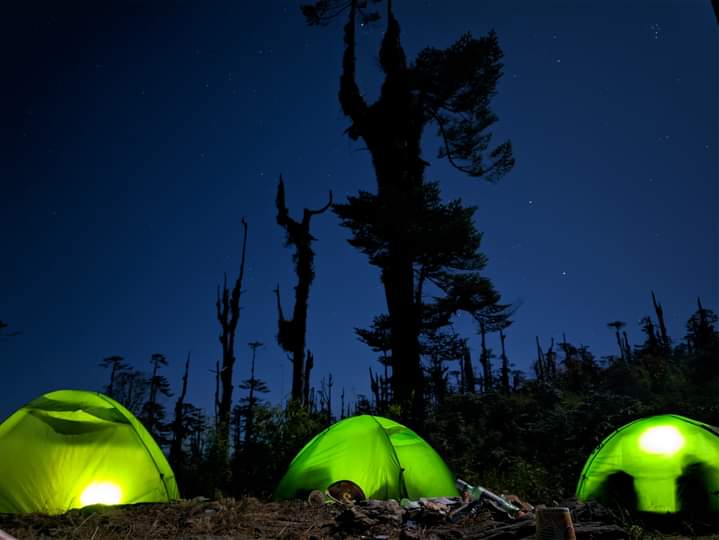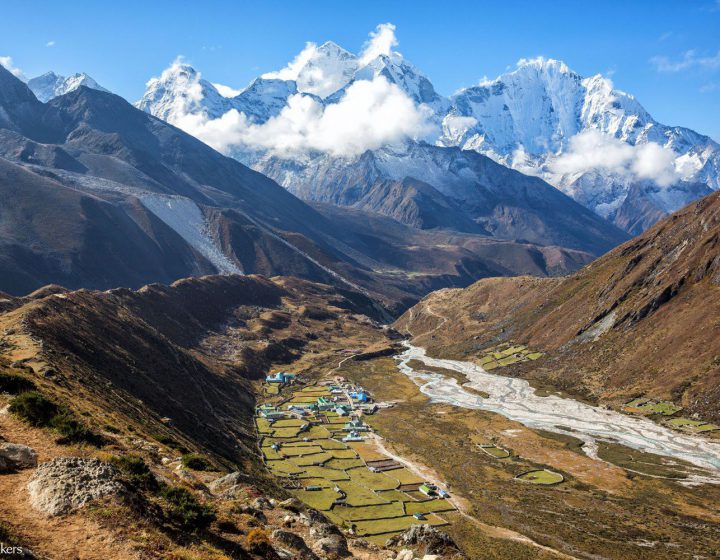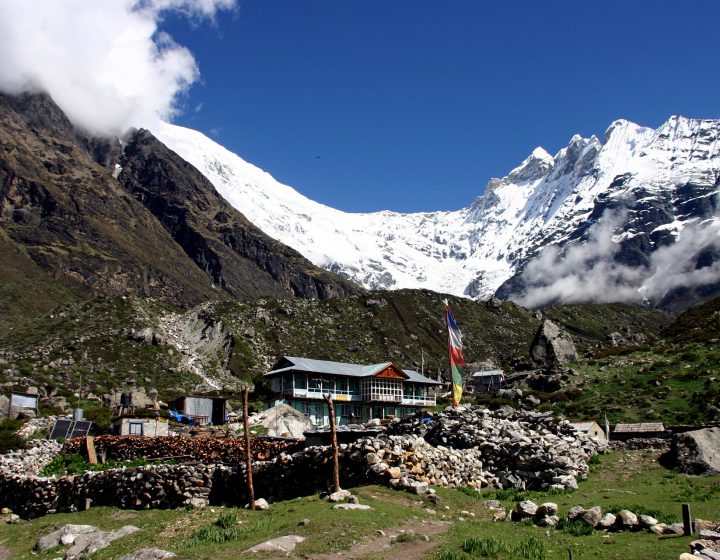Tour overview
Mustang is an ancient Himalayan Kingdom of Lo which lies in the northern central part of Nepal and at the top of the Kali Gandaki River. Lo was once part of Ngari, a name for far western Tibet. By the 14th century much of Ngari became part of the Malla Empire whose capital was Sinja in western Nepal. Ame Pal founded Lo in 1380 and was its first King. The present royal family can trace its history 25 generations back to Ame Pal. The high desert region of the Tibetan influence, Kali Gandaki, from the Tibetan border south to Kagbeni is generally referred to as Upper Mustang. It was open for tourist in March 1992. The Trans Himalayan Mustang is also known as the last Forbidden Kingdom. The Mustangis call themselves Lobas and they have their own King. After Nepal was declared a republic in 2007, the Nepal Government took back the official recognition of the Bista as the Mustangi King. However the people there still respect him as their King or tribe leader. There is strict control obtaining a special permit from the department of immigration to protect their tradition from outside influence as well as to protect environment.
This region is full of some of Nepal’s oldest Buddhist Monasteries, ancient caves, local tribes and scenic beauties of the colorful landscapes. Make an adventure starting from world’s deepest gorge Kali Gandaki region into world’s highest regions of Lo-Manthang valley that passes through an almost tree less barren landscape, steep rocky path up and down hills and panoramic views of Nilgiri, Annapurna, Dhaulagiri and many other beautiful snow capped peaks. The Trek passes through several small passes, beautiful villages and alpine valleys. The thousands years of isolation has kept the culture, lifestyle and heritage remain unchanged for centuries and to this date. The Upper Mustang Trek starts from Jomsom to Kagbeni, the entry point of Upper Mustang Region. Follow the banks of Kali Gandaki River upstream to get to Lo-Manthang, the capital of the upper Mustang.
Trip Facts:
Duration: 17 days
Type of the Trek: Tea House, Camping
Activities: Trekking, Culture Tours
Best Months: May to October
Maximum Altitude: 4070m
Grade: Moderate to hard
Trip Highlights:
*Explore the ancient Himalayan Kingdom and world’s deepest Kali Gandaki Gorge
*Ancient and isolated villages, unique culture and Traditional
*Ancient Buddhist Gompas
*Magnificent mountain views and colorful landscapes
Day 1: Arrive in Kathmandu (1350m)
Our representative will meet you outside the customs and immigration area at the airport. He or She will brief you on the immediate arrangements and escort you to your hotel. The trip leader will hold a short briefing in the hotel regarding trek arrangements and general orientation to Kathmandu.
Day 2: Sightseeing in Kathmandu Valley
Today, we visit the most historical and Spiritual attractions in Kathmandu which are also listed in world heritage sites. We visit Durbar Square, Swayambhunath (Monkey temple), Bouddhanath, which is one of the largest Stupa in the world and the sacred Hindu temple of Pashupatinath.
Day 3: Fly to Pokhara (823m / 30 min)
After breakfast, we transfer you to airport to board flight for Pokhara. It is 30 minutes very exiting flight. During the flight you will get opportunity to see Ganesh Himal, Dhaulagiri and Annapurna Range. Upon arrival at Pokhara airport our guide will pick up you and transfer to your hotel. In the afternoon our guide will take you around Lakeside and other popular places of Pokhara.
Day 4: Fly to Jomsom (2755m / 20 min) and Trek to Kagbeni (2840m / 3-4 hrs)
We take an early morning flight from Pokhara up the Kali Gandaki Gorge between the peaks of Dhaulagiri (8167m) and Annapurna I (8091m) to land at the small airstrip at Jomsom, the administrative center of Mustang district in full view of Nilgiri (2761m). This is a large town, it is also a major village on the Kali Gandaki area linking the age old Trans-Himalayan salt trade route to Tibet. From Jomsom onwards it is very windy in the afternoon. We meet our trekking staff and begin hiking along the banks of the Kali Gandaki River, passing through Eklebhatti (2826m) to the medieval-looking village of Kagbeni that is the "gateway" to upper Mustang. The arid climate, mud-walled houses, and Tibetan dress and language are indications of how closely this area is linked with Tibet. The peak of Nilgiri dominates the southern skyline. Most of the time, we walk along the small rough road.
Day 5: Trek to Chele (3090m / 6 hrs)
At the end of Kagbeni village we go through administrative matters at the ACAP check post. After that we pass the sign saying “restricted area” and enter the forbidden kingdom of Mustang. High water often dictates a high trail on the east bank of the Kali Gandaki to Tangbe (3042m), where we have our first views of the uniquely colored Chhortens and architecture found in Mustang. We continue to Chhuksang (2980m), which is at the confluence of the Kali Gandaki and Narshing Khola. Across the river from Chhuksang are some spectacular red, eroded, organ-pipe cliffs above the mouths of inaccessible caves. Continue north to a huge, red chunk of conglomerate that has fallen from the cliffs above and forms a tunnel through which the Kali Gandaki flows. We cross the Kali Gandaki River by steel bridge just in front of the tunnel. After the bridge, we leave the Kali Gandaki valley and climbs steeply (short) up Chele. There is now a change from the Manangi culture to the Tibetan culture of Lo. Most Lo houses have sheep horns above their doorways.
Day 6: Trek to Geling (3550m / 8 – 9 hrs)
From Chele, we follow the small rough road and climb up a steep spur to a cairn at 3082m. There is a view of Ghyakar village across a huge canyon. We continue long climb to a pass and cairn at 3480m. From here, we make a long, gradual descend to some chhortens on a ridge and then descend to Samar, surrounded by a grove of Popular trees at 3598m. This is a major stopping place for horse caravans, there are several shops and hotels with beautiful camping ground. The Annapurna Himal still dominated by Nilgiri, is visible far to the south. We climb above Samar to a ridge and then descend into a large gorge past a Chhorten painted in red, black, yellow and white. We enter in another valley filled with Juniper trees, cross a stream, then climb up to a ridge at 3800m and drops to Bhena. It skirts a gorge, climbs slightly to Yamda and the climbs over to another pass. We follow a ridge then descend to Shyangmochen, small settlement with some tea local hotels. From here, we climb gently to a pass at little above 3800m and enter another huge valley. We take the right fork and descend down to Gelling with its Poplar trees and extensive fields of barley, wheat and bug wheat. Although there is a road, most of the time we use old path and avoid the road. Today is long and difficult day.
Day 7: Trek to Charang (3540m / 7-8 hrs)
From Geling, we climb gently through fields up the centre of the valley, passing above Tama Gaon and its imposing Chhortens. We will begin an unrelenting climb that takes us across the head of the valley to the Nyi La pass (4000m), the southern boundary of Mustang proper. A gentle descend brings us to the Ghemi La and then steeply descend down to the Ghemi village (3500m). In the afternoon we cross a suspension bridge over a river, pass one of the most impressive and longest mani walls in Nepal, climb another high pass (3850m) and enter the ancient town of Charang. The entry portal is picturesque, with a nearby five story dzong (fortress-monastery), formerly the home of the kings of Mustang, and the vast red Dorje Dhen Gompa. Charang village is a maze of fields, willow trees and houses separated by stone walls at the top of the large Charang Chu canyon. The huge, five storey, white dzong and red Gompa are perched on the edge of the Kali Gandaki gorge at the eastern end of the village. We will visit the monastery and fortress later in the evening if time permits, or the following morning.
Day 8: Trek to Lo Manthang (3820m / 5 hrs)
From Charang we descend to cross the Charang Chu River and climb to a ridge. We turn north and climb gently to a large, isolated Chhorten that marks the boundary between Charang and Lo. Still climbing, crosses a stream, then becomes a grand, wide thoroughfare travelling across a desert like landscape painted in every hue of grey and yellow. Finally, from a ridge at 3930m, we get our first view of Lo Manthang, the fabled walled “capital” of Mustang. We descend for a while and then a short climb brings us to Lo Manthang.
Day 9: Lo Manthang
A day to explore Lo Mangthang, including visits to two important monasteries built in the early 15th century. Thugchen Gompa has very fine Buddhist murals on the walls of its massive assembly hall, which is supported by huge wooden columns. Champa Lhakhang contains a fifty-foot-tall image of Maitreya, the future Buddha, making it the largest clay statue in Nepal. Both monasteries have been restored by a team of Conservation Architects and Wall Painting Restorers. We also visit the Choedhe monastic school and the imposing four-story former Raja’s palace (if he is in residence). The former Raja can trace his ancestry back to the first king of the late 14th century, which suggests Lo Manthang dates back to that period.
Day 10: Trek to Dhrakmar (3800m / 6-7 hrs)
On our return we take a slightly different route which gives us the opportunity to visit two more villages. Leaving Lo Manthang, we take a high loop southwest to cross Chogo La Pass (4310m, the highest point on this trek) marked by cairn, offering a last glimpse of Lo Manthang. The trail contours across the head of a valley and crosses another ridge, then drops into another large desolate valley. After descending to the valley floor, we head to the west, up the centre of the valley to its head. Cross a ridge and traverse the heads of two more valleys to an indistinct pass. We cross the pass to some meadows and a stream and then long rocky descend to Lo Gekar then arrive a grassy valley and Ghar Gompa, in a grove of large trees alongside a stream and then have lunch outside Ghar Gompa. Ghar Gompa is the oldest active monastery in Nepal, dating back to the 8th century. There are no villages nearby, but there is a series of quarters for monks and pilgrims near the Gompa. From here we climb to a ridge, then cross a valley to a cairn and a pass above Ghar Gompa. We cross some alpine meadows to a crest, then drops down a steep eroded gulley to the upper part of Dhrakmar (means "red crag"). A large stream meanders through this village, making this a particularly pretty valley. Most of the surrounding hills are pastel shades of grey and yellow, but a huge, red fluted cliff provides a dramatic contrast.
Day 11: Trek to Shyangmochen (3775m / 6-7 hrs)
We descend following a stream, alongside the stone walls and fields of the extensive village then climb to a ridges and descend to the Ghemi. From Ghemi, we follow the direct route to the Nyi La pass and descend steeply into the Geling valley, bypassing Geling, and traverse to Tama Gaon with its imposing Chhorten. We rejoin the main trail and continue to Shyangmochen.
Day 12: Trek to Chhuksang via Chungsi Gompa (2980m / 7-8 hrs)
From Samar, we descend down through narrow valley to end of the valley and join with another valley, turn to the right side, after few minutes we climb steeply up to the cave monastery (1 hr from Shyangmochen). This is beautiful small monastery situated in the cliff. After visit the monastery, we retrace to the small bridge and climb steeply up to the top of the ridge, there is a cairn and several prayer flags (1 hr, 15-20 min). From here, we gently descend down to another top and then drop down through juniper forest to huge flat ground and stream there are some shepherd's huts. From this stream, we climb for a while and then join with main path. After then we follow the same way to Samar. From Shyangmochen to Samar it takes 4 hrs. After Samar, it is very easy retrace to Chhuksang.
Day 13: Trek to Kagbeni (4 hrs)
It is very easy walk to Kagbeni. Finishing the upper Mustang part we join with normal Annapurna circuit trekking route in Kagbeni.
Day 14: Trek to Jomsom (3-4 hrs)
Day 15: Fly back to Pokhara
After morning breakfast, we check in the airport to fly back to Pokhara. This is 30 min dramatic flight to Pokhara between gorge of the two huge mountains Dhaulagiri and Annapurna. On arrival at Pokhara airport, you will transfer to your hotel and in the afternoon we explore the interesting places of Pokhara.
Day 16: Fly back to Kathmandu
We fly back to Kathmandu airport and transfer to hotel. In the afternoon we visit nearest market for shopping and have farewell dinner at traditional Nepali restaurant with Nepali cultural program.
Day 17: Departure from Nepal
We will transfer you in international airport for your international flight.



